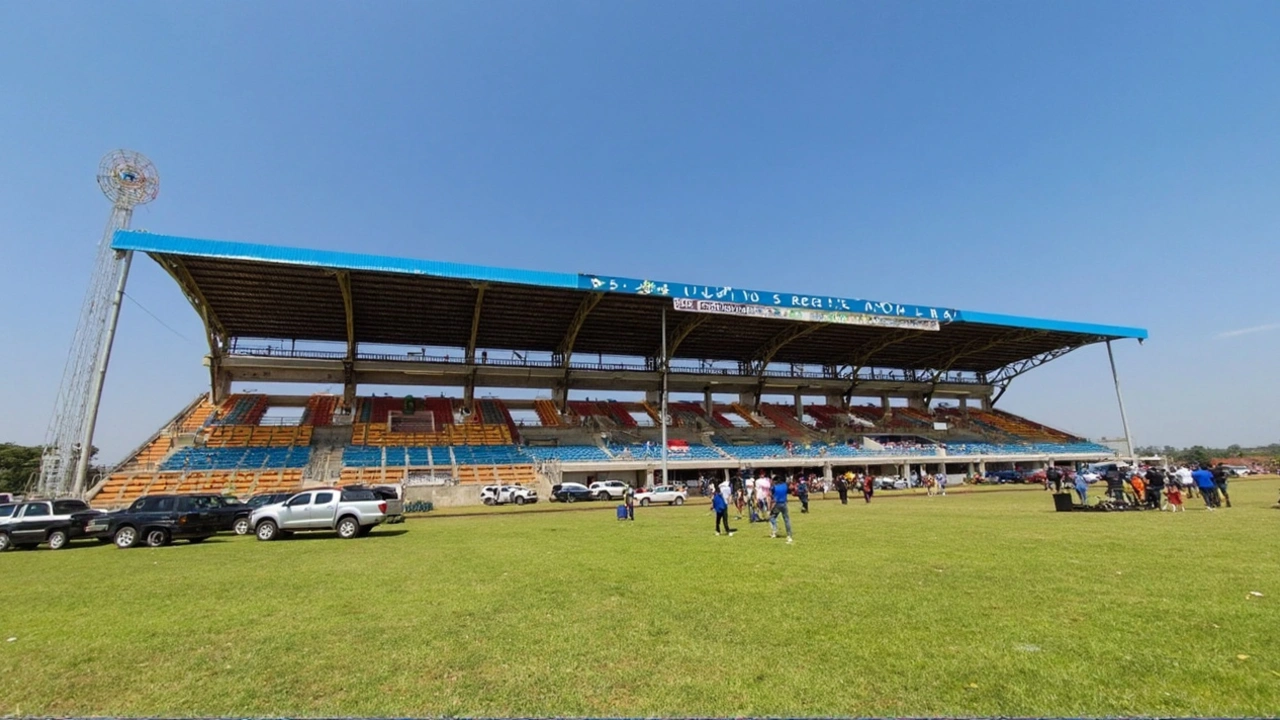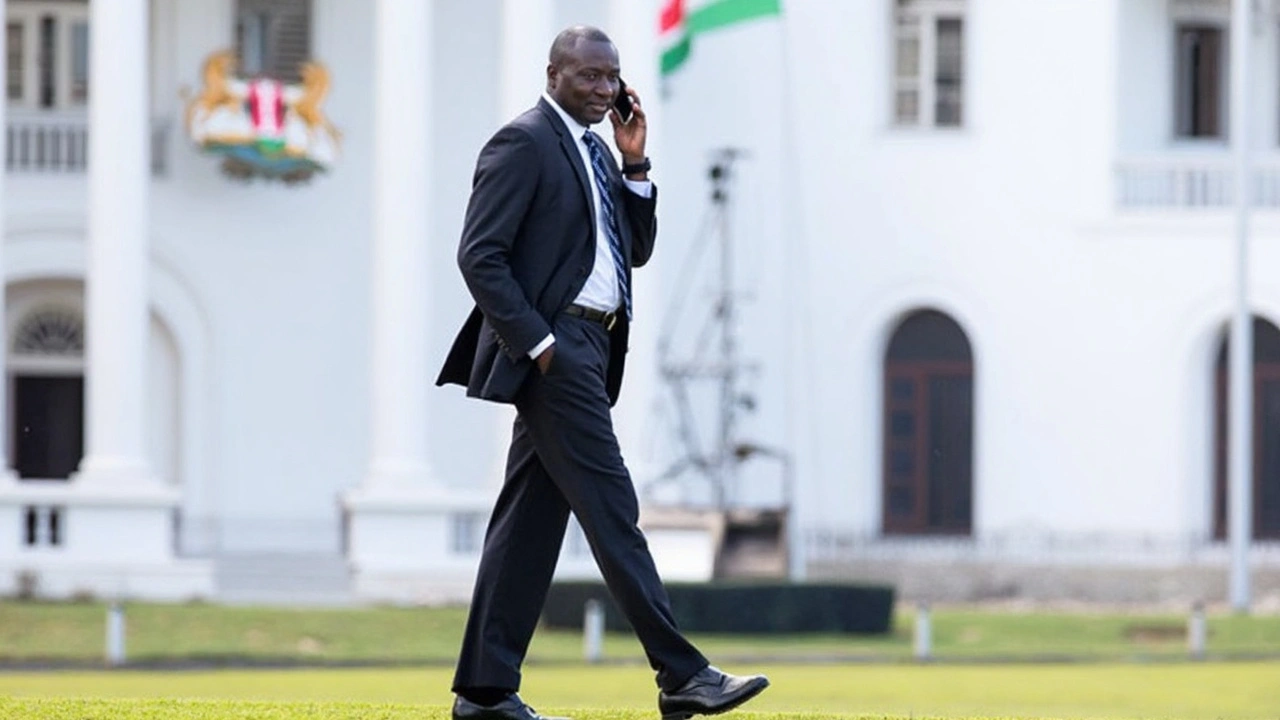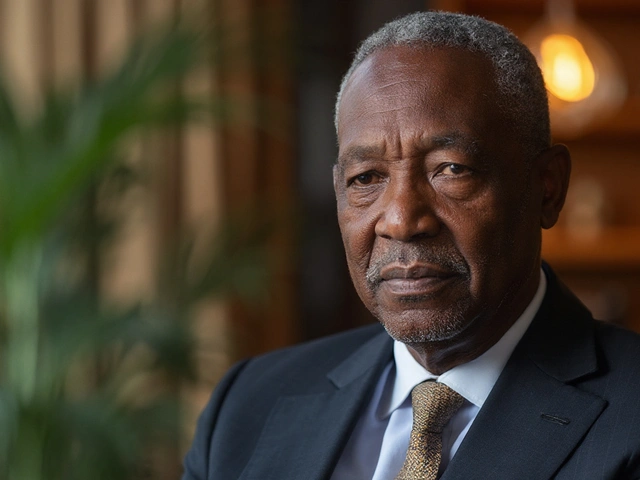Ruto’s Whirlwind 4-Day Tour Reshapes Nyanza’s Agenda
President William Ruto barely caught his breath as he swept through Kenya’s Nyanza region over four packed days leading up to Madaraka Day, mixing big policy announcements, ribbon-cuttings, and political glad-handing. This wasn’t just a regular regional visit—it was a carefully crafted show of commitment, aimed straight at transforming the region’s future and setting the stage for national celebrations.
The tour started on May 28 in Kisumu where affordable housing grabbed the spotlight. Ruto officially opened 901 units of the LAPFUND Makasembo project, a move that drew crowds eager for solutions to the region’s nagging housing shortage. Before the applause could die down, he was off to Kirembe to launch the new Lake Victoria Point project, another government-backed bet on turning the housing crisis into an opportunity for jobs and growth. People in these neighborhoods hope these units will do more than line up neat rows of apartments—they want real answers to living costs and better standards.
Later that first day, the president shifted focus to Homa Bay, kicking off the construction of the Gor Mahia Ring Road in Ndhiwa Constituency. This new ring road isn’t just tarmac; leaders say it could connect towns and boost local business linkages. At the same stop, he unveiled the Ndhiwa Technical Training Institute, promising new skills for young people battered by limited job options in the region.

Blue Economy Takes Center Stage at Madaraka
May 29 was a big day for Nyanza’s fishing families and everyone tied to the region’s iconic Lake Victoria. Ruto headed to Tom Mboya University for the closing ceremony of the Blue Economy Conference, pushing for a revamped approach to lake-based livelihoods. He spoke at length, urging investment in aquaculture and upgrading the old, overstretched maritime infrastructure. A major highlight: he approved a plan to transform 450 Beach Management Units into vibrant cooperatives, aiming for more earnings and local power over their own resources. At the university, a new modern building was also unveiled to cheers from students and faculty.
On day three, May 30, the president donned his hardhat to inspect key infrastructure projects. He checked progress at the Kenya Ports Authority pier, a crucial transport hub for goods and people moving through the lake, and swung by the newly built Rangwe Sub-County headquarters. These visits were a clear nudge to local officials to speed things up and make sure Nyanza’s development promises don’t get lost in bureaucratic fog.
The next morning, Ruto huddled with local politicians at the State Lodge. Hot topics included stalled projects, local procurement, and the ever-present question of how Nyanza can stand out as a model for inclusive growth rather than perennial political sideshows.
Madaraka Day on June 1 capped the whirlwind visit. The festivities took place at the recently renamed Raila Odinga Stadium in Homa Bay, drawing thousands. The day's official theme—Blue Economy and Maritime Affairs—wasn’t just for show. Ruto’s speech hammered home the government’s fresh interest in the lake’s potential for food security, jobs, and clean energy. He hosted a huge state luncheon, where even rival politicians found common ground in patriotic celebration, then wrapped up with a stop at the MFA Wire Forest in Kasipul, signaling an environmental turn for his administration’s local agenda.
For locals, this high-profile, fast-paced tour felt like a signal that Nyanza is back in Kenya’s development spotlight. Watching the president leap from housing estates to lake shores, the sense on the ground is clear: plenty of promises—now everyone is watching to see which ones stick.







Angela Arribas
The term “affordable housing” is misused here – “affordable” is an adjective, not a noun, and the phrase should be hyphenated as “housing‑shortage”. Moreover, the sudden flood of units feels like a political spectacle rather than a sustained solution for low‑income families. 🤨 Let’s hope these projects survive beyond the Madaraka Day photo‑op. 🙄
Sienna Ficken
Oh, brilliant! Another “blue economy” summit where they promise to turn Lake Victoria into a glittering goldmine of aquaculture while we’re still debating if the fish can breathe the water they’re supposed to farm. In reality, sustainable fish farms need proper feed chains, oxygen regulation, and-surprise!-investment that isn’t just a buzzword parade. If the government truly wants to boost livelihoods, they should start by training local entrepreneurs on hatchery best practices instead of handing out ceremonial ribbons. 🌊💡
Zac Death
The tour through Nyanza reads like a carefully choreographed roadshow, and it’s hard not to admire the energy behind the schedule.
The blend of infrastructural push-like the Gor Mahia Ring Road-paired with sector‑specific initiatives such as the Blue Economy Conference is striking.
The ring road, while modest in length, has the potential to shorten travel times for traders moving between Kisumu and Homa Bay, which could lower logistics costs for small businesses.
Meanwhile, the emphasis on aquaculture aligns with global trends that see inland water bodies as untapped sources of protein and employment.
If the government can secure funding for modern fish hatcheries, the local fishing communities might finally break free from over‑fishing cycles.
The technical training institute in Ndhiwa is another smart move, because a skilled workforce is the backbone of any sustainable growth strategy.
However, the real test will be how quickly these projects move from paper to concrete, as bureaucratic delays have historically hampered progress in the region.
The president’s hard‑hat inspection at the KPA pier signaled a hands‑on approach, yet without clear timelines, the promise could fade into another political footnote.
Madaraka Day celebrations at the newly renamed Raila Odinga Stadium offer a symbolic platform to showcase these achievements, but symbolism must be backed by measurable outcomes.
Local entrepreneurs should be encouraged to partner with these new cooperatives, especially the 450 Beach Management Units turned into community‑run entities.
With proper governance, these units could generate not just revenue but also empower women and youths who have been marginalized in traditional fishing sectors.
In addition, the environmental focus at the MFA Wire Forest hints at a broader eco‑conscious agenda that could attract green funding.
All of these initiatives, if coordinated effectively, could transform Nyanza into a model of inclusive growth that other regions look up to.
Until we see transparent reporting and tangible improvements on the ground, the optimism remains hopeful but cautious.
Lizzie Fournier
Hey folks, it’s great to see the government finally turning its attention to the housing crunch and the lake’s potential. If you’re a young professional in Homa Bay, the new technical institute could be a stepping stone toward a career in renewable energy or fisheries management. At the same time, the affordable units should be allocated with transparent criteria so that the most vulnerable families actually benefit. Let’s keep the conversation going and hold officials accountable as the projects roll out.
JAN SAE
Wow-what a whirlwind of announcements!!!; the president’s itinerary covered housing, infrastructure, education, AND the blue economy; this is unprecedented!!!; however, the real impact will depend on implementation-timelines, budgets, AND local stakeholder engagement!!!
Steve Dunkerley
From a development economics standpoint, the integration of blue‑economy initiatives with agro‑industrial value chains could catalyze multimodal growth across Nyanza. By establishing cooperatives for beach‑management units, the policy leverages community‑driven governance, which aligns with best‑practice frameworks for resource sustainability. Nonetheless, rigorous monitoring and data‑driven evaluation will be essential to mitigate risks of over‑exploitation and ensure fiscal accountability.
Jasmine Hinds
Let’s keep the momentum going! 😊
Madison Neal
I totally empathize with families waiting for those housing units; the delay often translates into extended periods of informal settlements, which can strain public health systems. Collaborative planning with NGOs and local councils could streamline the allocation process and ensure that the units truly serve those in need.
John Crulz
Interesting how the tour mixed infrastructure with the blue‑economy agenda; I wonder how the training programs at the new institute will incorporate sustainable fishing techniques and whether local schools will get involved in the curriculum.
Anita Drake
The recent developments in Nyanza provide a unique opportunity to blend economic growth with cultural preservation. By involving community elders in the planning of the Beach Management Units, the initiatives can respect traditional fishing practices while introducing modern sustainability measures.
Eduardo Lopez
Behold, the grand spectacle of political pageantry, where ribbon‑cuttings masquerade as substantive progress. One must question whether the underlying policy framework possesses the gravitas to transcend mere theatrics and deliver tangible benefits to the populace.
Nancy Perez de Lezama
While enthusiasm is commendable, let’s not forget that over‑promising without clear execution plans only fuels public cynicism.
Matt Heitz
It is imperative that Kenya harnesses its own resources-particularly Lake Victoria-without succumbing to foreign dependency. Strengthening domestic aquaculture will not only feed our nation but also assert our sovereignty in regional food security.
Susan Mark
For anyone interested in the upcoming cooperatives, consider attending the community workshops that will outline governance structures and profit‑sharing models. This knowledge will empower members to make informed decisions and safeguard the initiatives from mismanagement.
Jason Jennings
All this talk about development feels like a recycled script-another political season, same promises, and yet the grassroots still waiting for real change.